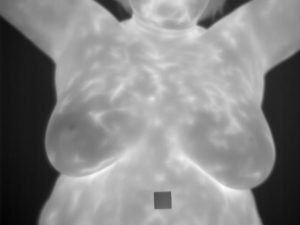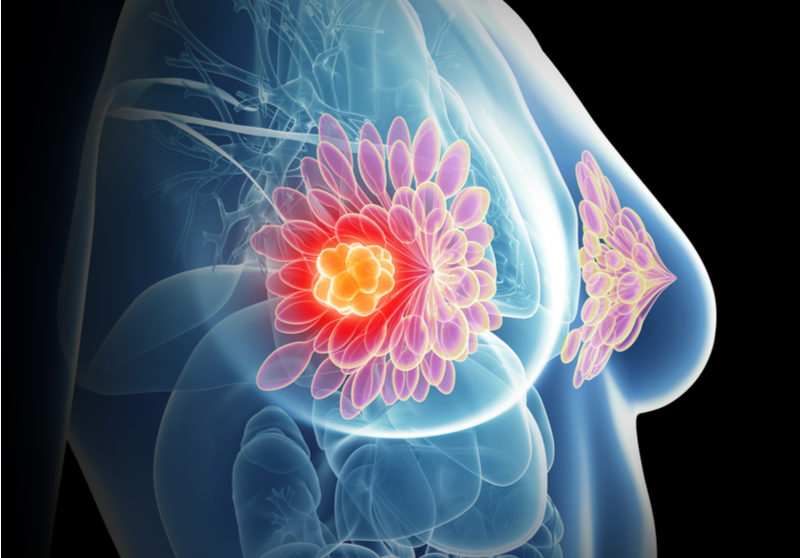One of the most common diseases that play a leading role in the death of women is breast cancer which is very difficult for countries’ healthcare system to treat, specifically in its advanced stages.
In the past, the temperature of human body was used as a health diagnostic tool. Warm blood flows in human body that produces heat. Respective changes in the temperature of the inner part of human body can be regarded as probable illnesses. Since 17th century thermometers were used as a tool to observe the temperature of the body. This procedure is known as Thermogulation. Scientists such as George Martin and Carl Wundelich stated that temperature of the body is a scientific criteria for diagnosing diseases. The normal body temperature is between 36.3 C to 37.5 C and any degrees out of this range is viewed as a symptom of diseases. In 1800, a new world appeared in the field of Thermography, infrared light was discovered by William Herschel and his son John Herschel recorded the first thermal images. Hardy in 1934 proposed that: “Human skin can be considered as a black body radiator”. He studied diagnostic tools in clinical science using infrared Thermography observations.

Thermography in clinical science
Although thermal imaging is not definite and surroundings can affect its results, but by using thermal images irregular thermal patterns can be easily recognized. Reasons why thermal imaging is wide-accepted among the medical community is listed below:
- Thermal imaging is non-contact and non-invasive
- The method can be used from far way
- It’s possible to simultaneously monitor a large area of the population
- Interpretation of thermogram’s colors is easy and fast.
- This method only records natural radiation from the surface of the skin and there is no trace of harmful rays, so is suitable for long-term and repeating use.
- Finally Thermography is a fast way to monitor and observe the dynamic changes in temperature.
Due to these merits, Thermography is an effective replaced diagnostic tool.
Thermography as a diagnostic tool for Breast Cancer
Thermography has many distinctive features. Some of them are listed in the following paragraph:
- The ability for early diagnosis of cancer by detecting early signs of cancer, ten years earlier than mammography
- Predicting the future state of the patient
- Independence to the age of the patient and the density of breast tissue
- Detecting symptoms of breast cancer 1 year earlier than mammography
In contrast, the lack of specialized knowledge to observe and poring over the results of Thermography is the vital feature that reduces its quality in comparison with other methods such as CBE, mammography and biopsy.

Artificial Intelligence in Breast Cancer Thermography
In 1960s, there was a strong tendency for replacing computers with physicians. However, at that time computers were not developed yet and modern digital images didn’t exist. These were the problems that caused the computer’s failure for detecting the abnormalities. In 1980s, despite of the failure in the 1960s, scientists used this approach to assist physicians in order to identify the abnormal areas and also provide a second opinion beside doctor’s detection. The approach is called Computer Assisted Diagnosis (CAD) and it is well-accepted all around the World. This approach (CAD) didn’t attempt to replace physicians with computers but it helped them to reach a more reliable way of diagnosis. From 1977 to 2015, several outstanding CAD systems in Thermography have been made. Even in 2002, with images taken from the camera of the second generation and the use of recurrent neural networks, the percentage of accuracy was the biggest challenge. In recent years, due to developments in image processing techniques, Sensitivity and Specificity in Thermography has been able to achieve more than other methods such as mammography. With production and advancement of neural networks and also introducing systems based on fuzzy logic and as well as the high quality of the Thermograms as a result of the second generation of cameras, Thermography systems (CAD) draw attention of many researchers.
Restrictions of Thermography as a diagnostic tool
There are some restrictions that restrict the ability of Thermography in diagnosis of abnormal states of breast tissue. Since this method is a thermal imaging of skin’s surface, it cannot detect a region or tumor. The interpretation of Thermography images depends on the identifying regions with high temperature, low metabolic function, or cold tumor, which is very challenging. According to a study about function of Thermography in 2003, it was found that all of the false-negative results of Thermography have been related on tumors on micro size; Which suggests that Thermography is not as accurate as mammography in detecting these abnormal states.
References:
